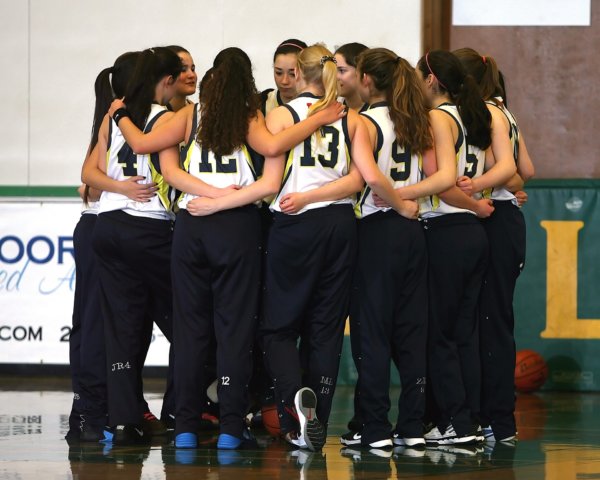Over the past 30 years, the number of females participating in recreational and professional sports has largely increased. As play has evolved from a defensive approach to an emphasis on power and speed, so has the increase of serious injuries among young female athletes.
An area of concern among young female athletes is severe knee injury to the ACL (anterior cruciate ligament). The ACL is one of the four major ligaments of the knee connecting the front of the tibia (shinbone) with the back of the femur (thighbone). The ACL helps provide stability to the knee joint.
Female athletes who play basketball, volleyball and soccer are eight times more likely to suffer an ACL injury compared to male athletes, according to the American Orthopaedic Society for Sports Medicine. ACL tears in the knee are most noticeable in sports which involve jumping, sudden stops and pivots during play.
Why is the knee prone to injury?
The knee’s stability relies on four strong, binding ligaments that are non-stretchable fibres controlling side-to-side and back-and-forth motion.
The ACL is the size of your index finger, preventing the tibia from moving too far forward. When it tears, it retracts and cannot heal on its own. Physiotherapy treatment is necessary to help an athlete regain full range of the knee and it can take up to a year for a reconstructed ligament to fully heal. Our patients with torn ACLs feel their knee “giving out.” ACL injuries may increase the risk of arthritis.
As women’s professional sports continue to grow in popularity, coaches and trainers are urged to adjust training and conditioning techniques to reduce the risk of ACL knee injury. It is vital to start these training techniques as early as possible.
For example, an intensive jump-training program can help female athletes reduce landing force while keeping their knees bent and straight forward. Specialized weight training helps to strengthen the hamstring. One-legged squats and lunges can strengthen muscles and improve balance.
Activa recommends these 4 tips for reducing risk of ACL knee injury among female athletes.
1. Maintain core strength
Concentrate on building and maintaining overall strength during workouts. Pushing yourself too hard when exercising can strain muscles and lead to injury. Building your core muscles and hamstrings will help prevent ACL tears.
2. Balanced stretching
Maintaining balance between the left and right side of the body is crucial in preventing ACL knee injury. We recommend balanced stretching on both sides of the body to maintain centre of gravity when jumping or pivoting.
3. Activate hamstrings during exercise
Women generally have weaker hamstring muscles than men, which leads to uncontrolled movement of the knee. Building strength in hamstrings during drills like jumping squats will help female athletes prevent ACL knee injury.
4. Eat a well-balanced diet
Eat enough calories and stay hydrated! Focus on drinking plenty of water and eating fruits, vegetables, protein and whole grains throughout the day to stay energized during sport.
Contact Activa if you have any questions about preventing ACL knee injury for yourself or female athletes that you coach or train.
